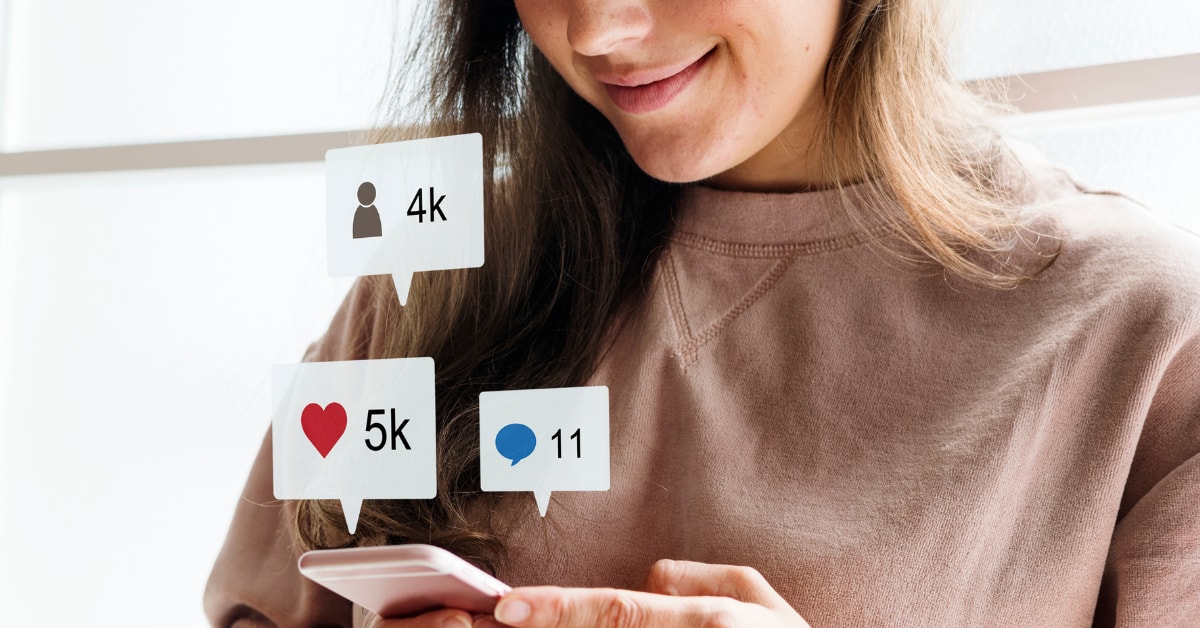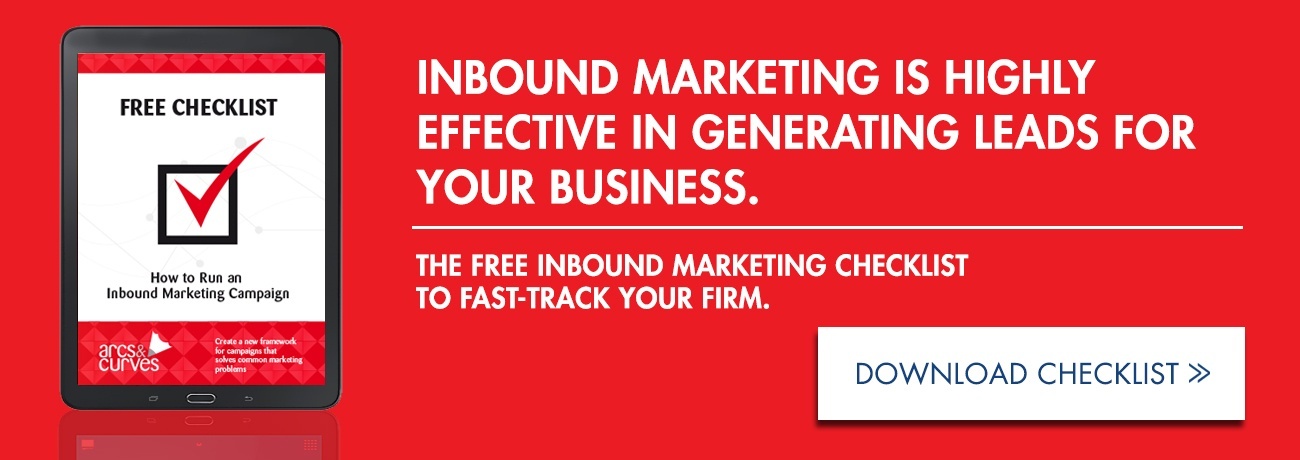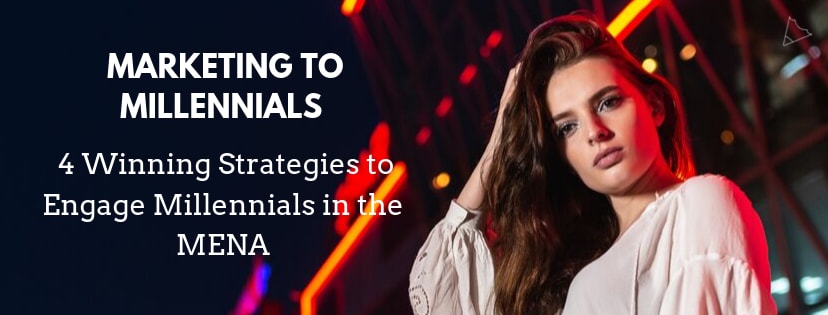
Anyone born between 1981 and 1996 is considered a Millennial.
Not only are they the largest and most educated in the history of the world, but also the most researched & brand-loyal segment of the population.
That’s according to a brand new research on YouTube’s MENA audience.
In addition to that, millennials have the highest spending power as compared to any other age segment.
This segment of the population is curious, tech-savvy, digitally-native & an outward-looking breed.
Here’s something you didn’t know:
In 2018, the global millennial spending power was calculated at $2.5 trillion!
And in another news 'millennials are in the driver's seat, as they are currently the largest market’ (Forbes 2018)
That explains a lot about their rising importance in the world of marketing, and why advertisers need to adapt their strategies to engage this evolving segment.
Let's jump to the next section to understand millennials better.
10 Astonishing Statistics & Insights about the Digital Lifestyle & Psychology of Millennials:
- According to Visa, Millennials in the Middle East are the highest spenders globally, typically spending twice as much as their European counterparts (in the context of travel expenditure)
- Millennials in Saudi Arabia are the highest consumer of YouTube globally;
- 63% of millennials click “buy” on their smartphones every year;
- Millennials in the Middle East demonstrate more brand loyalty than their peers in the US, the UK, Japan or Australia (according to the Google Consumer Barometer).
Saudi Arabia and the UAE show a significantly higher percentage of millennials who consider just one brand when they buy; - Over 60% of millennials use their phone to research about the product or service they’re interested in. In other words, they want to drive their buying decisions, rather than have someone sell to them.
(Hint: Use Content/Inbound Marketing to get their attention and convert them into leads.) - When making purchasing decisions online, eight out of ten millennials admit that they never hit “buy” without reading reviews.
In fact, 64% of MENA millennials always hunt for the best offers and deals available; - 60% of viewers in MENA are millennials, comprising YouTube’s biggest Middle Eastern audience, second only to the US when it comes to watch time;
- 43% of MENA’s Millennials have installed/used food delivery apps, 40% have installed/used ride-hailing apps (e.g. Uber & Careem), and 36% have installed/used mobile apps for exercise/activity;
- A recent report by HSBC Private Bank suggests that the Middle East is home to the highest proportion of millennial entrepreneurs in the world - 63% of the business owners they screened in the Middle East were aged 35 or under;
- Millennial entrepreneurs in the Middle East also seem to work the hardest.
Their average workday is 12.5 hours, more than 2.5 hours above the global average for millennials.
Data Sources:
- Think with Google
- HSBC Private Bank
- MENA’s Millennials Decoded - IPSOS
- VISA - GCC Millennials Report
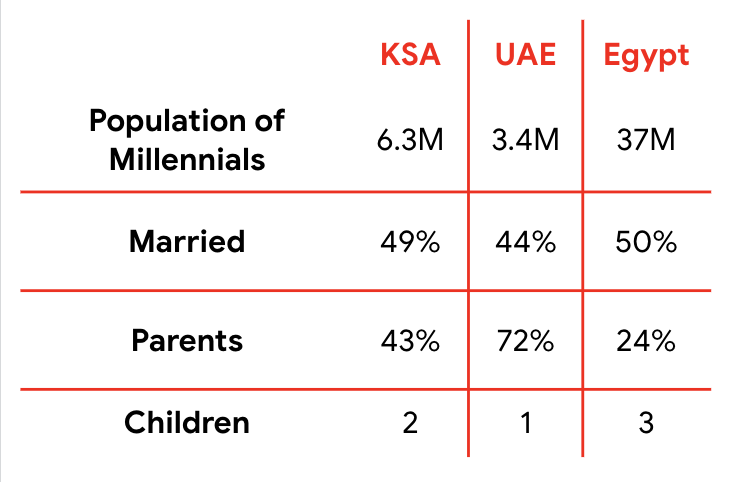
Now that we’ve wrapped our heads around figures that matter, let’s get to the most important section of this article.
Marketing to Millennials in the MENA: Best Tactics, Strategies & Stats
1) Deploy Emotional Storytelling to Inspire & Engage
With more than 90% millennials being active on social media, a growing number of brands are increasingly recognizing the importance of infusing emotion into their content in order attract, engage and sell to millennials.
Thinking of social media as another “sale-sy” advertising outlet is a grave mistake.
No wonder overly promotional brands often have the lowest engagement rate among their followers.
“Here’s a blurry photo of my product and all of the reasons that you should buy it right now.”
Don’t be that brand.
Instead, create stories and engaging narratives to help your brand stand out from literally hundreds of competitors in this cluttered landscape.
But why is Storytelling so effective?
Stories make us human, and help us resonate emotionally with the society around us.
Research indicates that the emotional response to an ad influences people’s intention to buy, more than the ad itself.
“The first use of any product is inside the consumers’ minds.
(Stop. Read that last sentence again.)
Imagining the use of something that appeals to you increases your desire for it.”
― Drew Eric Whitman, Author of CA$HVERTISING: How to Use More than 100 Secrets of Ad-agency Psychology to Make Big Money Selling Anything to Anyone
According to an analysis conducted by the Institute of Practitioners in Advertising (IPA), emotional storytelling is very effective.
Having researched over 1,400 case studies, the analysis concluded that advertising campaigns with purely emotional content outperformed their rational counterparts with almost double effectiveness.
Millennials are drawn to emotional storytelling because it appeals to their humanity.
Take the example of Always - a brand leader in feminine care products.
With women’s empowerment and gender equality becoming an important topic of discussion in recent times, Always decided to capitalize on this and create a story-driven campaign with a social angle.
The result:
Always #LikeAGirl
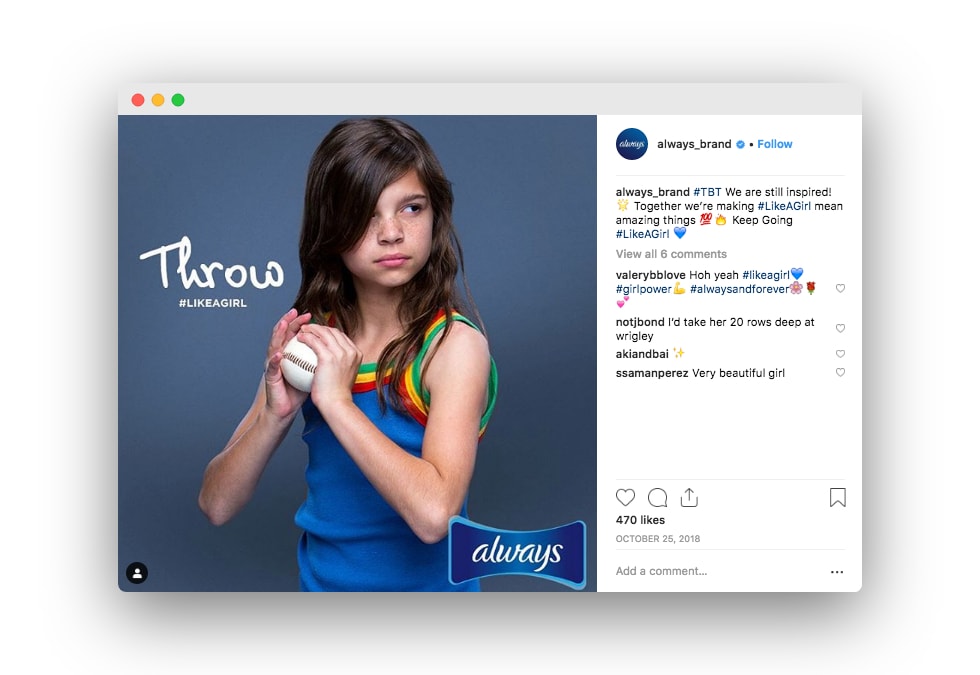
People have been using the phrase “like a girl” in a negative context to denote weakness.
In its determination to flip this phrase on its head and empower its target audience (women), Always created the #LikeAGirl and created numerous social media posts showcasing girls and young women doing amazing things.
This campaign made female millennials feel that the brand cares about them and wants them to achieve their goals and ambitions in life.
Let’s admit it - only a handful of people get excited about feminine products, so the likelihood of them engaging with the brand and sharing posts is minimal.
With Always’ storytelling strategy, women expressed their fortitude and strength using social media and in turn, helped Always associate themselves with a higher purpose, that’s beyond just selling their products.
2) Video is the Way to Go
Video is the future of marketing, but many brands are yet to capitalize on its effectiveness.
Millennials prefer video content because of its ease of absorption, information distillation and visual creativity.
In other words, people can consume more information in less time.
A Research from Cisco states that 69% of consumer Internet traffic in 2017 was dedicated to video, while video-on-demand traffic is expected to double by 2021.
Millennials all over the Middle East are flocking to YouTube for consuming content everyday, which gives you the best chance to capture their attention.
These MENA millennials aren’t just passively watching videos, they’re actively driving video content.
They’re spending over three hours per day on online video, more than both messaging apps and games. Millennials are also twice as likely to post content online as compared to their global counterparts
In KSA and the UAE, 68% consume more video digitally than they do on TV, with 77% watching YouTube every day in Egypt.
That surpasses the numbers of any other platform, including Television!
A brilliant example of using YouTube to build brand equity was the Forsaty campaign by Unilever.
They ran an online competition aiming to discover the next female vlogging star in the region, by working with four regional YouTube creators on four different brands (Dove, Sunsilk, Pond's, Lipton) to generate outstanding results!
“The Forsaty campaign saw a huge turnout from young female talents, who were really excited to share their unique ideas through their videos….” said Asad Rehman, Media Director, Unilever MENA.
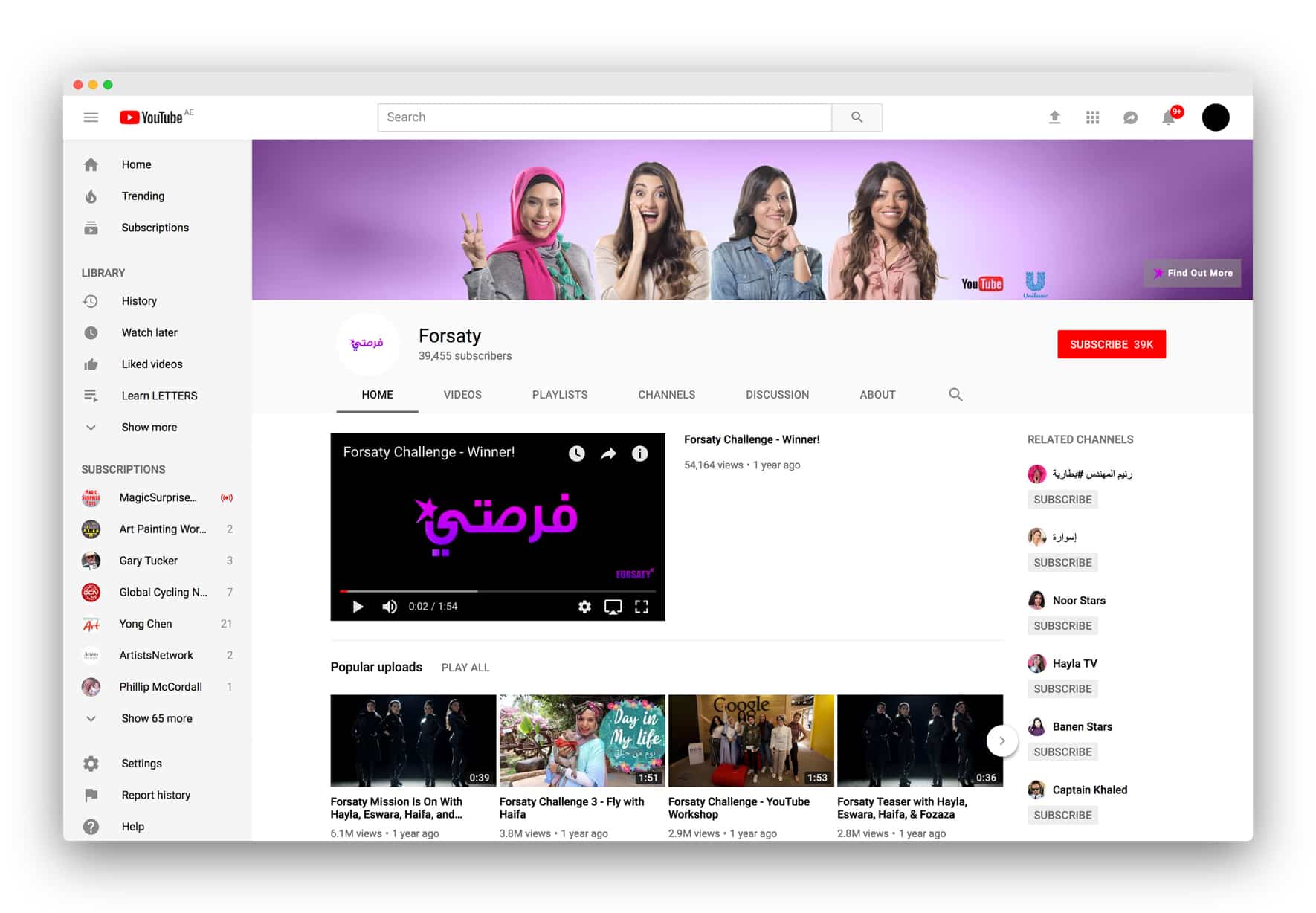
Unilever's Forsaty campaign, in collaboration with Google, resulted in:
- Over 20% completed watch time, double the norm, for videos up to 8 min long
- Best in class examples of uplift for brand consideration and recall (17.5% for Dove and 11.8% for Sunsilk, both surpassing benchmarks)
- Unilever's local YouTube channel becoming the top globally
Apart from YouTube, there’s another video platform whose popularity is rising at an alarming rate!
Hint: The content can get quite cringe-worthy, at times.
You guessed it right!
It’s ....

Since its launch in September 2016, TikTok has leaped over better-known social networking websites like LinkedIn, Twitter, Pinterest, and Snapchat.
That’s not all!
TikTok was also the 3rd-most downloaded app in the first quarter (Q1) of 2019, with 188 million new users.
Currently, it has 500 million active users around the world! (Datareportal, 2019).
The concept is pretty simple - TikTok allows users to create 15 second videos, soundtracked by music clips and sharing it on their profile.
Within its advertising platform for marketers is the ability to target precisely with custom audience and conversion events, and track performance real time.
You can also pay according to your optimization model, that includes - CPC, CPM and oCPC.
Although I’m not advocating everyone to jump on the TikTok bandwagon, it’s worth a shot IF your brand is congruent with the platform and its users.
Brands like Dubai Tourism have partnered with TikTok for their #ThisisDubai campaign involving “AR stickers with exclusive Dubai themed music”.
9,800+ videos were generated during this campaign, a figure that speaks volumes about the popularity of this app among millennials in the MENA.
This graph by Influencer Marketing Hub shows the growth spurt TikTok has achieved in terms of dominating the social media landscape.
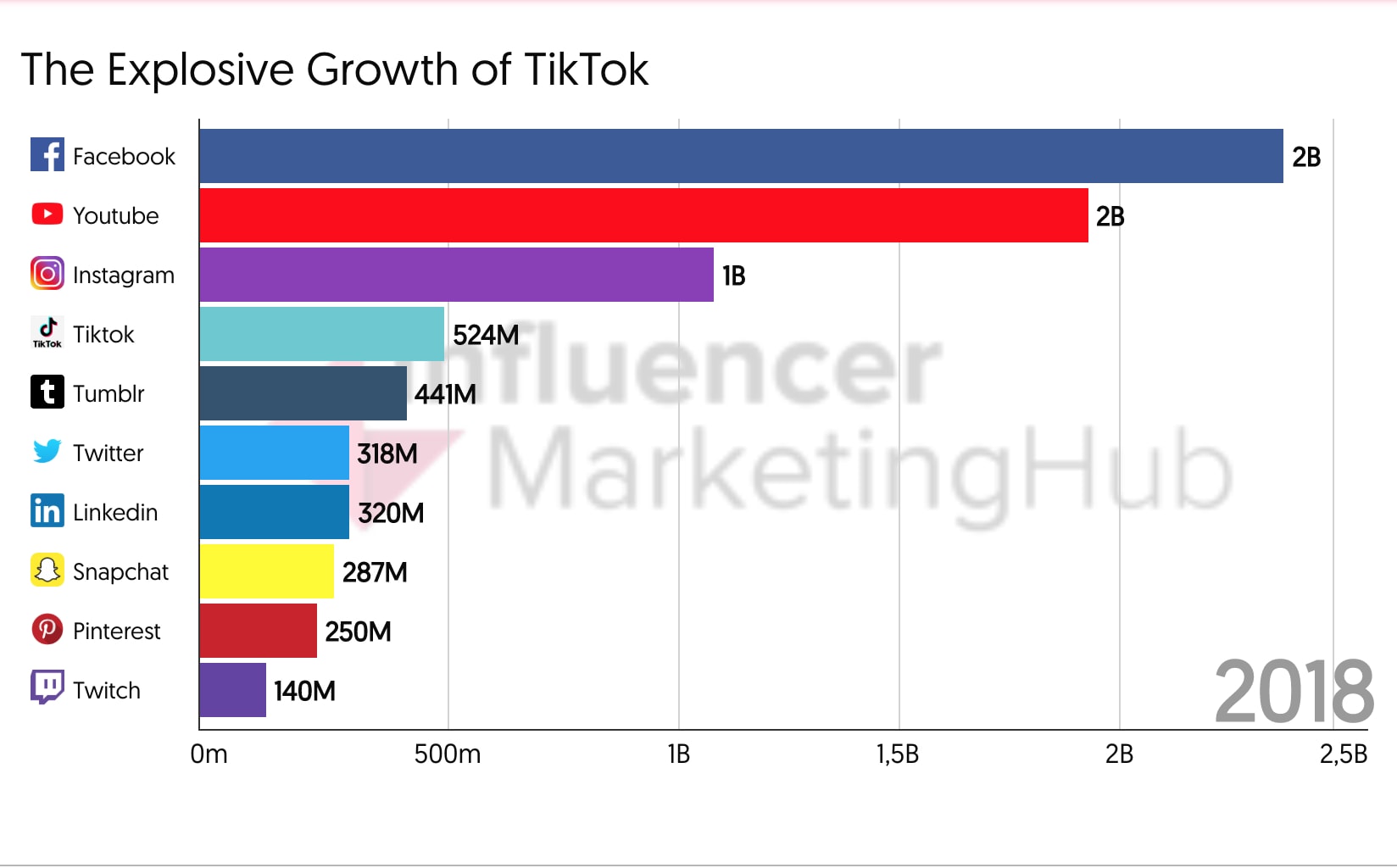
So, How to Incorporate Video into your Marketing Strategy?
- Create videos that will appeal to your target audience.
These can be educational, entertaining, engagement-provoking or promotional.
Your first video might not be perfect, but it’s better than not using video at all.
After all, you’re starting somewhere :) - Experiment with adding videos to your emailers and website (provided it doesn’t ruin the experience);
- Create vertical videos for Instagram stories, and promote them among your target audience, to gauge the response rate;
- Take advantage of Facebook Live videos - which even notify users when you’re going live and deliver the highest organic reach in terms of Newsfeed content priority
- Start creating videos for your YouTube channel (create one if you haven’t already). Once you’ve gotten the hang of it, go all in!
You can even repurpose videos into diversified content items like blog articles, social media posts, podcasts (using audio from the video) and so much more!
For a more detailed understanding of using video for marketing to millennials, check out HubSpot’s Ultimate Guide to Video Marketing.
This should answer a lot of questions you may have in terms of strategy, production and execution.
3) Drop the Clichés & Be Authentic in your Approach
Millennials seek authenticity.
They like to build a unique identity for themselves, in order to be be accepted into their tribe or lead their own.
The brands they choose speak volumes about their lifestyle and personality.
That's why, they’ll stop at nothing when it comes to finding out the core values of your brand and what it encompasses.
If your product/service successfully convinces them, you’ll be rewarded with their “influencer” status to drive more people towards your brand.
What you’ll get in return is loyalty and that pays off exponentially in the long run.
In the GCC, millennials demonstrate significantly more brand loyalty as compared to their global peers.
33% of Saudi millennials report having considered only one brand when purchasing flights, and the number is higher for the UAE at 43%.
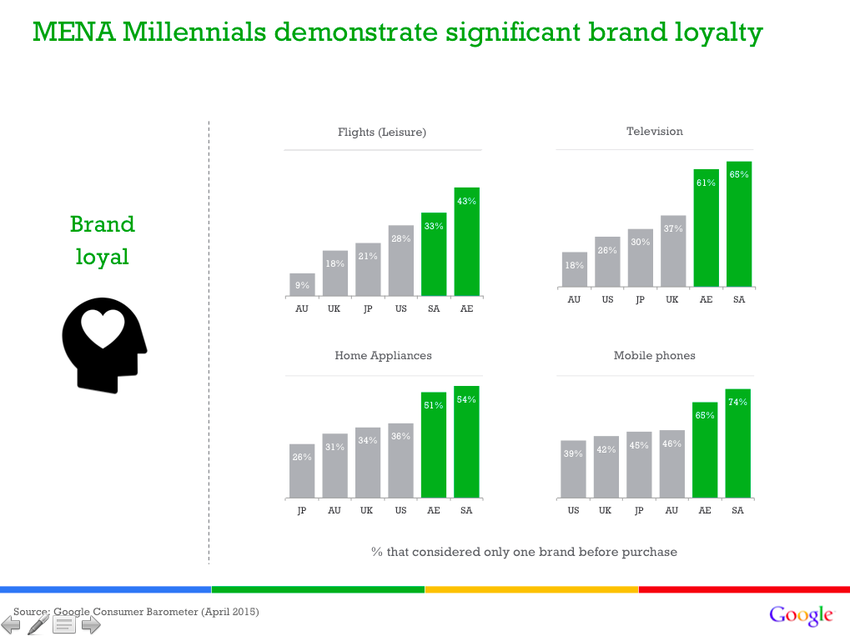
To achieve this, you need to look at marketing from a solution point-of-view, rather than a sales point-of-view.
Become so relevant and authentic, that your customers will see you as the brand that understands them.
And the main step to get started here is of course, the fundamental advice any marketing book will give you - Understand your customer to the minutest details.
Your millennial customers aspire to live "a purposeful life and possess active community and social ties" above everything else.
Instead of features, promote your benefits.
After all, your product is only as good as the experiences it enables people to have.
Careem ran a great campaign that highlighted their authenticity as a brand and propensity to understand their target audience.
2019 was about to start in a few days.
While other companies were harping about New Year Resolutions, Careem twisted the concept to …
New Year Delusions.
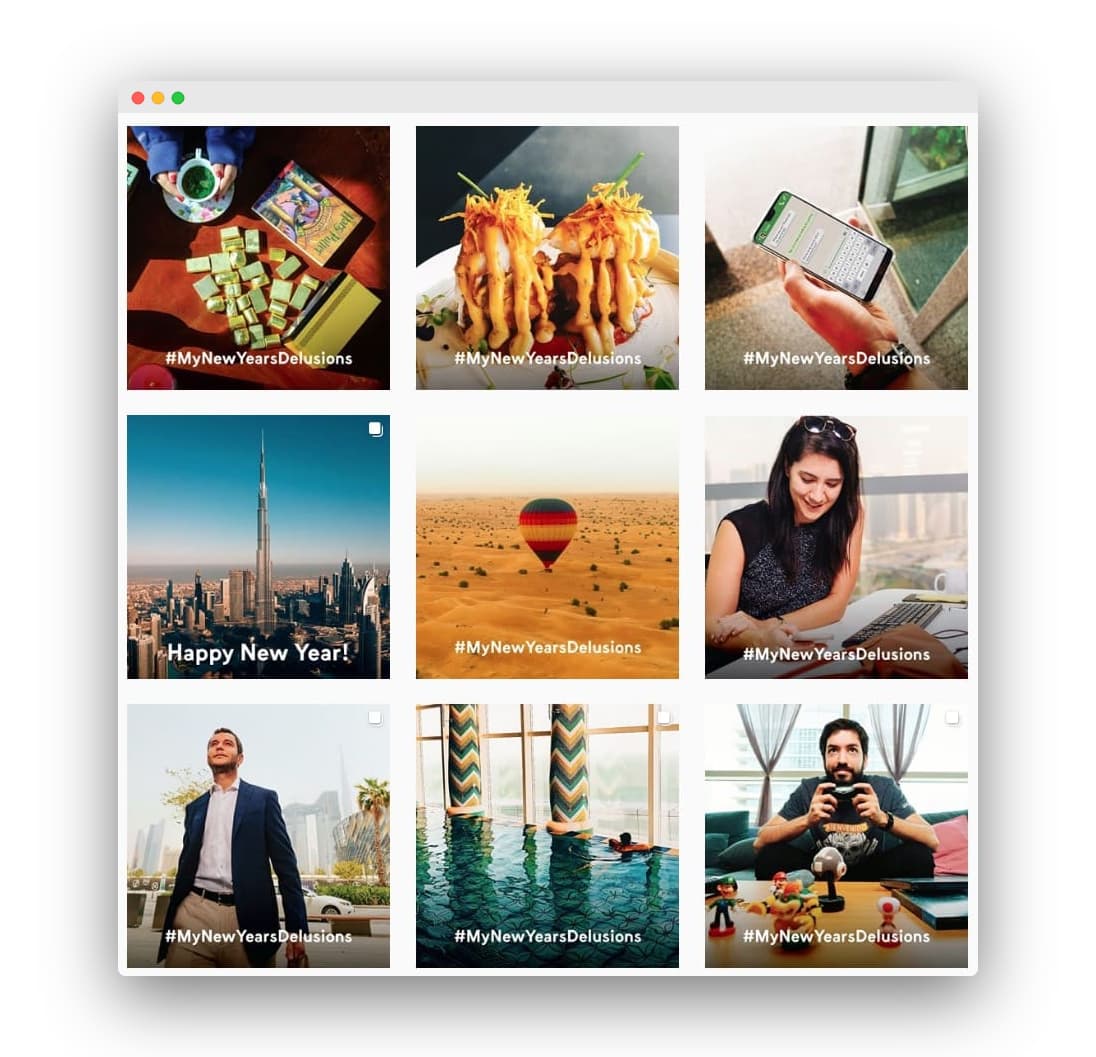
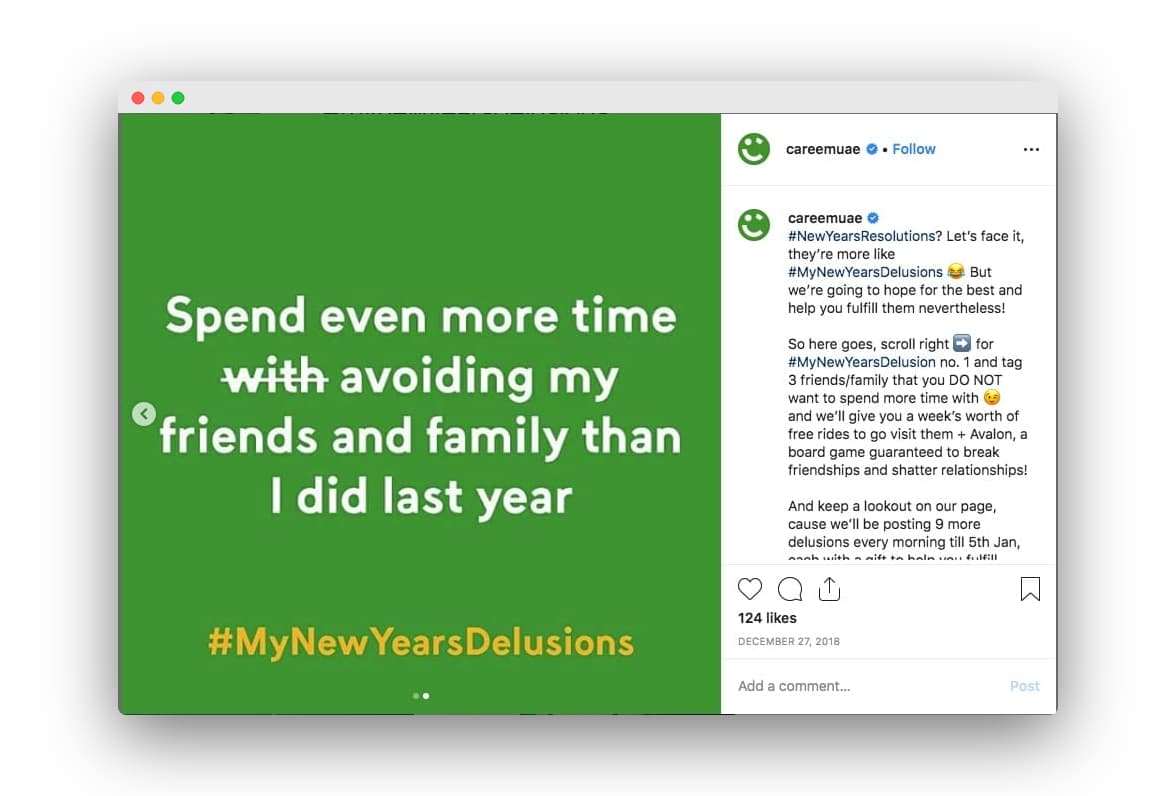
With a themed hashtag #MyNewYearsDelusions, they invited people to share their failed resolutions and tag friends/family to win prizes.
It sure as hell generated a decent amount of engagement - something that most brands lack when it comes to winning at social media marketing.
Following are some tips on how to be authentic and relevant while marketing to millennials in the MENA:
Be accurate in your ad targeting and choose the right ad for the right audience segment;
Create customized & differentiated messaging for younger and older millennials;
Be authentic and transparent in your digital communication - don’t run scammy campaigns and ambiguous offers;
Focus on benefits, not features! Your campaigns should appeal to millennials’ motivations, pain points, triggers and desired solutions;
Design a customer engagement strategy to cover the entire digital lifecycle of a customer
4) Optimize the Digital Experience using a Mobile-first Approach
“Mobile-first” is all the rage nowadays, but what does it really mean?
The term was first introduced by Luke Wroblewski in his book Mobile First in 2009.
He highlighted the transition from desktop to mobile web design and provided guidance on how digital teams need to align themselves using mobile design strategies, layouts, user experience and so on.
As brands and marketers, you need to understand that mobile isn’t just another silo or channel.
In fact, it’s an all-inclusive catalyst for digital experiences, online applications, e-commerce portals, AI and VR apps and upcoming innovations.
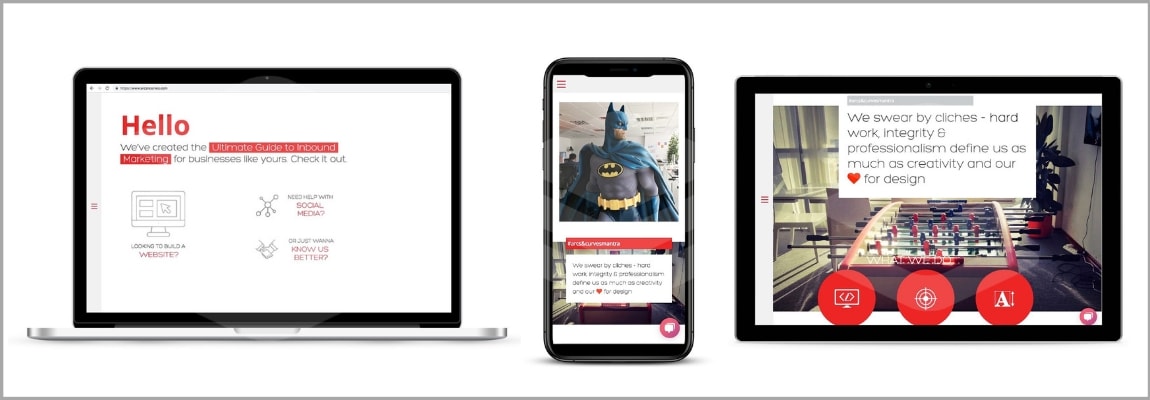
Millennials are so attached to mobile phones that most would give up their car before their devices, if the need arises.
More than a third of millennials in KSA are only ONLY on their mobile phones.
When it comes to the UAE, 34% watch videos on their smartphones several times a day.
Their propensity to stay connected makes GCC millennials less-forgiving while encountering accessibility issues on mobile.
Research suggests that 43% of KSA millennials flock to another mobile-optimized website if they have a bad experience with the first one.
Marketers need to engage millennials on a mobile-first basis, because digital technology is now becoming an extension of their personalities.
Is your website mobile-friendly?
Take this free test by Google to find out.
Conclusion
Millennials are distracted.
They’re fidgety, and have less patience.
The urge to do more in less time makes them want digital experiences that revolve around their lifestyle.
You can’t talk to an ever-evolving audience with archaic marketing tactics.
And when that audience (millennials) doesn’t pay attention to your ads, they won’t convert.
No conversion = No revenue.
We both know the consequences of such a catastrophe.
As the digital industry picks up with the ever-changing needs of millennials, their marketing needs will evolve too.
To conclude, the best way to engage with millennials is to understand their lifestyle and create content around their convenience to absorb it.
This sums up all the 4 strategies I’ve elucidated above.
Here’s a 1-line recap to help you remember what you’ve read so far:
- Story-tell, don’t sell
- Video is the way
- Authenticity breeds loyalty
- Mobile-First, everything else second


